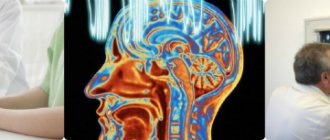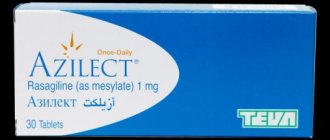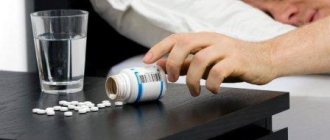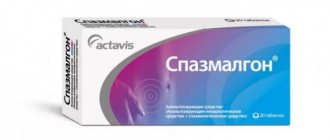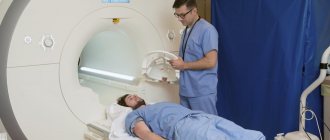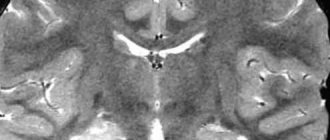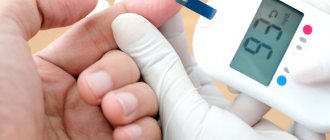Depakine Chrono tablets are one of the many forms of the drug Depakine. They have a prolonged effect, which allows you to reduce the frequency of taking the drug during therapy. Instructions for use indicate a pronounced anticonvulsant effect of the product. Its use allows you to stop epileptic seizures of various forms and severity, and prevent their development. The product is also used in complex treatment. Depakin Chrono tablets are one of the many forms of the drug Depakin. They have a prolonged effect, which allows you to reduce the frequency of taking the drug during therapy. Instructions for use indicate a pronounced anticonvulsant effect of the product. and prevention of bipolar manic disorders.
Release form and composition
Available in two dosage forms.
Syrup is a transparent, syrupy liquid of light yellow color, with the smell of cherry pits. Packaged in 150 ml dark glass bottles. The kit includes a dosing spoon or a dosing syringe.
Lyophilisate for preparing a solution for intravenous administration is a compressed porous mass from white to almost white. The presence of individual fragments of the mass is allowed. The supplied solvent is a colorless transparent liquid. Packaged in clear glass bottles of 400 mg.
| Syrup | 1 ml |
| Sodium valproate | 57.64 mg |
| Excipients: 70% crystallizing sorbitol, methyl parahydroxybenzoate, 67% sucrose, propyl parahydroxybenzoate, artificial cherry flavor, glycerol, concentrated hydrochloric acid or concentrated sodium hydroxide solution, purified water. | |
| Lyophilisate for preparing a solution for intravenous administration | 1 fl. |
| Sodium valproate | 400 mg |
| Solvent: water for injection | 4 ml |
Price
- Depakine, syrup 50 mcg/ml; bottle 150 ml), box 1 pc.; average price 340 rub.
- Depakine, powder for injection 400 mg; bottle (4 ml) solvent in ampoules, box 4 pcs. ; average price 335 rub.
- Depakine Chrono retard tab. 500 MG. No. 30; average price 615 rub.
- Depakine Chronosphere retard granules, 100 MG. No. 30; average price 670 rub.
- Depakine Chronosphere retard granules, 250 MG. No. 30; average price 715 rub.
- Depakine Chronosphere retard granules, 500 MG. No. 30; average price 725 rub.
- Depakine Chronosphere retard granules, 750 MG. No. 30; average price 940 rub.
- Depakine Chronosphere retard granules, 1000 MG. No. 30; average price 1100 rub.
- Depakin Chrono retard tab. 300 MG. No. 100; average price 1110 rub.
- Depakine enteric 300 tablets. No. 100; average price 995 rub.
Indications for use
Focal and generalized epileptic seizures with simple and complex symptoms; behavioral disorders caused by epilepsy; convulsive syndrome in organic brain pathologies; childhood tics, febrile convulsions in children; bipolar manic-depressive psychosis that cannot be treated with lithium or other medications.
The injectable dosage form is indicated as a temporary replacement for its oral forms (if their use is not possible).
Reviews about "Depakine Chrono"
Experts often prescribe medicine to their patients as a stand-alone treatment for epilepsy or as part of complex therapy. Reviews from doctors and consumers about it are mostly positive. Those surveyed note the high effectiveness of the product, its ease of use, and the possibility of using it to treat children.
At the same time, reports of adverse reactions to taking the medication are quite common. Often, such consequences result from violations of the conditions of therapy. Many patients note that the discomfort is insignificant, which allows them to continue using the product.
Contraindications
Contraindications to the use of Depakine in syrup form: functional disorders of the pancreas and liver, acute and chronic hepatitis, hepatic porphyria, hemorrhagic diathesis, hypersensitivity to the active substance of the drug.
Contraindications to the use of Depakine in the form of lyophilisate: thrombocytopenia; a history of severe liver disease in the patient and his close blood relatives (especially drug-induced hepatitis); simultaneous use with St. John's wort and mefloquine; severe liver damage with fatal outcome when using valproic acid in the patient's blood relatives; hypersensitivity to valproic acid, sodium valproate, valpromide, semisodium valproate or other auxiliary components of the drug.
Prescribed with extreme caution for the following diseases and conditions:
- renal failure (dose adjustment required);
- joint use of MAO inhibitors, antipsychotics, benzodiazepines, antidepressants (the possibility of potentiating their effects);
- children under 3 years of age - due to a high risk of liver damage;
- combined use with topiramate - due to the possibility of developing encephalopathy; patients receiving multiple anticonvulsants - due to the risk of liver damage; with carbamazepine (risk of reducing the plasma concentration of the active substance and increasing the toxic effects of carbamazepine);
- simultaneous use with drugs that lower the seizure threshold or cause seizures (tricyclic antidepressants, phenothiazine derivatives, chloroquine, tramadol, butyrophenone derivatives, bupropion).
- with carnitine palmitoyltransferase (CPT) type II deficiency;
- co-administration of phenytoin, phenobarbital, indirect anticoagulants, primidone, erythromycin, lamotrigine, rifampicin, zidovudine, carbapenems, felbamate, nimodipine, cimetidine, acetylsalicylic acid.
Instructions for use Depakine (method and dosage)
Syrup
Taken orally. The dosage regimen is individual.
- Adults and children weighing more than 25 kg: initial dose 10 – 15 mg/kg per day. Further, it is possible to gradually increase the dose of the drug by 200 mg per day at intervals of 3–4 days until a clinical effect is achieved.
- Average daily dose: 20 – 30 mg/kg.
- Children weighing less than 25 kg and newborns: the average daily dose is 20 - 30 mg/kg 2 - 3 times a day with meals.
- Maximum dose: for adults and children weighing more than 25 kg – 50 mg/kg/day.
- The use of Depakine in a dose of more than 50 mg/kg per day is possible subject to monitoring the concentration of valproate in the blood plasma.
- If the plasma concentration is more than 200 mg/l, the dose of valproic acid should be reduced.
Solution
The lyophilisate is diluted with the supplied solvent and administered intravenously.
- Recommended dose: 400 – 800 mg as an infusion or drip at a rate of 25 mg/kg for 24, 36 and 48 hours.
- If simultaneous use orally and intravenously is necessary, the first administration is carried out by intravenous infusion at a dose of 0.5–1 mg/kg/hour 4–6 hours after the last oral administration.
- Simple replacement therapy (for example, before surgery): 4–6 hours after the last oral dose, the drug is administered intravenously, diluted with sodium chloride solution for injection (0.9%)
- Alternative options: in the form of a continuous infusion of the previously used dose throughout the day; in the form of 4 infusions, duration 1 hour (in this case, with each infusion 1/4 of the previously used daily dose is administered).
- The usual average dose of the drug: 20 – 30 mg/kg per day.
- Situations requiring rapid achievement and maintenance of an effective concentration of valproic acid in the blood plasma: intravenously, by bolus administration, 15 mg/kg over 5 minutes; then the administration is continued as a constant intravenous infusion at a rate of 1 mg/kg/h, with gradual adjustment of the rate of administration to ensure a concentration of valproic acid in the blood of about 75 mg/l. Next, the rate of administration is changed depending on the clinical picture.
- After stopping the infusion, it is recommended to switch to treatment with oral forms of the drug. The syrup is taken at the same dose or adjusted taking into account the clinical condition of the patient.
- Female children and adolescents, women of childbearing potential and pregnant women: Treatment should be initiated under the supervision of a specialist experienced in the treatment of epilepsy and bipolar disorders. Treatment should only be started if other treatments are ineffective or not tolerated, and the balance of benefit and risk should be carefully re-evaluated when treatment is regularly reviewed. It is preferable to use Depakine for monotherapy in the lowest effective doses and, if possible, in extended-release dosage forms.
- During pregnancy, the daily dose is divided into 2 single doses.
In old age: the dose of the drug is selected in accordance with the achievement of control over epileptic attacks.
In case of renal failure and/or hypoproteinemia: dose reduction is possible if necessary. When selecting a dose, the clinical picture should be assessed.
Overdose
The consequences of violating the rules for dosing the drug threaten the patient with serious health problems. In the absence of urgent and adequate medical care against the background of acute poisoning, death is likely after a deep coma.
Possible clinical symptoms of overdose:
- muscle hypotonia;
- absence or weakening of reflexes;
- constriction of the pupils;
- breathing problems;
- acidosis;
- drop in blood pressure;
- possible intracranial hypertension due to cerebral edema;
You will learn more about cerebral edema due to a stroke in this article.
- seizures with high volumes of valproic acid.
Treatment is carried out in a hospital setting. Gastric lavage must be performed within 10-12 hours; after this time the manipulation will be ineffective. Taking activated carbon in the amount of 1 tablet for every 10 kg of body weight will slow down the absorption of the components and alleviate the condition of the victim. The emphasis is on symptomatic therapy - restoring breathing, maintaining kidney function, relieving stress on the heart and blood vessels. In severe cases, they resort to hemodialysis and hemoperfusion.
Side effects
The following side effects are possible:
- Central nervous system: often - extrapyramidal disorders, memory impairment, stupor, dizziness, nystagmus, drowsiness, headache, convulsions; very often - tremor.
- Digestive system: often – stomatitis, gum changes (gingival hyperplasia), vomiting, diarrhea, epigastric pain; very often - nausea.
- Hematopoietic system: often – thrombocytopenia, anemia.
- Immune system: often – hypersensitivity reactions (for example, urticaria).
- Reproductive system: often – dysmenorrhea.
- Hematocoagulant system: often – hemorrhages and bleeding.
- Biliary tract and liver: often - liver damage, causing deviations from the norm in the functional parameters of the liver (decreased prothrombin index, increased activity of liver enzymes, increased bilirubin concentration).
In some cases, reactions from the sensory organs are possible - deafness (reversible and irreversible) and metabolism - weight gain, hyponatremia.
Subcutaneous tissues and skin may be subject to dose-dependent or transient alopecia (including androgenetic alopecia due to polycystic ovary syndrome, hyperandrogenism, hypothyroidism).
special instructions
- In patients taking other anticonvulsants, therapy with valproic acid should be initiated gradually.
- A clinically effective dose should be achieved after 2 weeks (in patients not treated with other anticonvulsants - after 1 week).
- During therapy with Depakine, it is necessary to regularly monitor liver function, the state of the hemocoagulant system, and the peripheral blood picture (especially during the first 6 months).
- Before starting surgery or treatment, in the event of spontaneous bleeding or subcutaneous hematomas, it is recommended to determine the bleeding time, the number of formed elements in the peripheral blood (including the number of platelets).
- During the period of taking the drug, you need to be careful when driving vehicles and performing work that requires extreme concentration (due to possible drowsiness).
pharmachologic effect
An anticonvulsant drug with central muscle relaxant and sedative effects. Shows antiepileptic activity in all types of epilepsy.
The main mechanism of action appears to be related to the effect of valproic acid on the GABAergic system: the drug increases the content of GABA in the central nervous system and activates GABAergic transmission.
Therapeutic effectiveness begins with a minimum concentration of 40-50 mg/l and can reach 100 mg/l. At a concentration of more than 200 mg/l, a dose reduction is necessary.
Drug interactions
- Simultaneous use of Depakine with neuroleptics, antidepressants, MAO inhibitors, benzodiazepine derivatives, ethanol enhances the inhibitory effect on the central nervous system.
- Concomitant use with drugs that have hepatotoxic effects may cause increased hepatotoxic effects.
- Simultaneous use with antiplatelet agents (including acetylsalicylic acid) and anticoagulants enhances the effects of the latter.
- Concomitant use increases the concentration of zidovudine in the blood plasma, which leads to increased toxicity.
- Simultaneous administration of the drug with carbamazepine reduces the concentration of valproic acid in the blood plasma due to an increase in the rate of its metabolism caused by the induction of microsomal liver enzymes under the influence of carbamazepine. Valproic acid potentiates the toxic effect of carbamazepine.
- Concomitant use with mefloquine increases the metabolism of valproic acid in the blood plasma and increases the risk of developing seizures.
- Concomitant use of the drug with meropenem may reduce the concentration of valproic acid in the blood plasma; with primidone – increase the concentration of primidone in the blood plasma; with salicylates – enhance the effects of valproic acid due to its displacement by salicylates from binding with blood plasma proteins.
- Concomitant use with felbamate increases the concentration of valproic acid in the blood plasma, which is manifested by toxic effects (nausea, drowsiness, headache, decreased platelet count, cognitive impairment).
- Concomitant use with phenytoin during the first few weeks will reduce the total concentration of phenytoin in the blood plasma due to its displacement from plasma protein binding sites by sodium valproate, induction of microsomal liver enzymes and acceleration of phenytoin metabolism.
- Simultaneous administration with phenobarbital, due to its binding to plasma proteins, increases its concentration in the blood plasma. Phenobarbital increases the rate of metabolism of valproic acid and leads to a decrease in its concentration in the blood plasma.
- Simultaneous use of the drug with cimetidine and erythromycin may lead to an increase in the concentration of valproic acid in plasma due to a decrease in its metabolism in the liver.
Analogues of the drug according to ATC codes:
VALPARINE VALPARINE HR DEPAKINE CHRONOSPHERE CONVULEX CONVULEX CONVULEX CONVULEX CONVULSOFIN ENCORATE ENCORATE CHRONO All
Before using the drug DEPAKINE CHRONO, you should consult your doctor. These instructions for use are for informational purposes only. For more complete information, please refer to the manufacturer's instructions.

